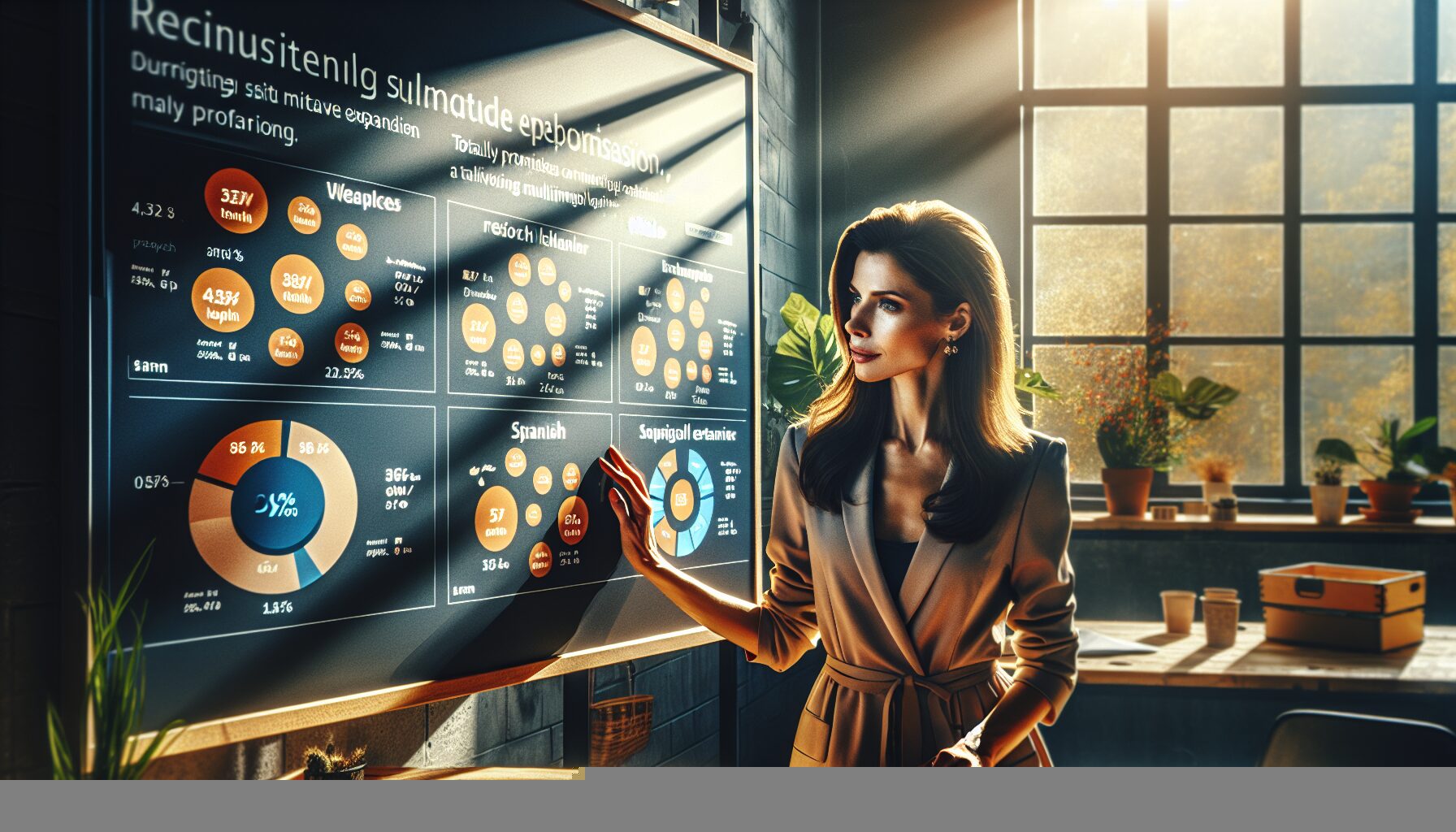About eldris
At Eldris, we automate SEO, multilingual site expansion, and EU compliance for brands scaling across Europe. Our AI-powered platform handles everything from content publishing to regulatory docs—so you don’t have to.
In This Article
- Identify key EU markets and prioritise native languages based on data.
- Combine AI tools with skilled human translators for accuracy.
- Choose scalable multilingual architecture aligned with SEO goals.
- Implement hreflang and optimise all metadata for regional relevance.
- Translate product content with persuasion and localisation in mind.
- Ensure cultural and legal alignment across every EU country served.
- Use automation and feedback loops for continuous content improvement.
- Avoid common pitfalls such as generic machine translations and unoptimised SEO.
- Measure success using KPIs like conversion rate, bounce rate, and regional ROI.
- Treat ecommerce site translation as an ongoing, strategic initiative.
Why EU Ecommerce Translation Matters in 2024
Capturing the Cross-Border Opportunity
As businesses expand across borders, ecommerce site translation becomes a fundamental strategy for reaching new customers, especially within the linguistically diverse European Union. With over 24 official languages, the EU represents a massive opportunity—yet one that requires thoughtful, localised communication. In 2024, consumers demand more than just translated content. They expect tailored, culturally-relevant experiences that reflect an awareness of local customs, idioms, and societal norms. Failing to meet these expectations can result in lost conversions and diminished brand trust.
Translating your ecommerce site goes beyond substituting text; it’s about adapting your entire digital storefront for each linguistic and cultural audience. Consider this: 76% of European internet users prefer purchasing from websites in their native language, and over 40% will not buy at all if the content isn’t translated. Clearly, ecommerce site translation is not only a best practice but also a financial imperative.

Your Translation Roadmap: Step-by-Step
Language Prioritisation & Content Audit
Begin by determining which EU markets hold the most promise for your brand. Data-driven decisions are crucial, so analyse web traffic, sales trends, and social engagement by country. Prioritise high-impact languages such as German, French, Spanish, and Italian before expanding further. Once languages are selected, conduct a thorough content audit to categorise all website elements requiring translation. These include landing pages, product information, checkout flows, user reviews, and legal disclaimers.
Ensure you differentiate between core content and dynamic, user-generated content. This will influence your approach regarding translation tools and QA monitoring. Moreover, identify region-specific campaigns that require additional cultural nuance. A strategic audit lays the foundation for scalable ecommerce site translation and long-term adaptability across evolving EU regions.
Choosing the Right Tools: AI, Plugins, and Professionals
Blending Machine Speed with Human Accuracy
Today’s translation landscape offers a hybrid approach: the precision of skilled linguists combined with the speed of artificial intelligence. Popular machine translation engines like DeepL and Google Translate offer instant outputs that can then be polished by human editors. AI plugins integrated into ecommerce platforms—such as Shopify Translate & Adapt, Weglot, and WPML—can automate much of the workflow while preserving context-sensitive translations.
However, to truly resonate in local markets, human oversight is indispensable. Use professional translators for product descriptions, branded messaging, and legal content. Be wary of over-automating nuanced sections—automatic translations often misinterpret idioms, sarcasm, and tone. Ultimately, your ecommerce site translation strategy should be flexible: combine AI where speed is essential and humans where quality is critical. Doing so ensures your multilingual content reflects professionalism and trustworthiness.
Setting Up Multilingual Architecture
Domain vs. Subdirectory vs. Subdomain
After deciding what content to translate, your next step involves structuring your ecommerce platform to support multiple languages. There are three principal architecture choices: country-code top-level domains (ccTLDs), subdomains, and subdirectories. Each has its pros and limitations, depending on your business goals and SEO strategy.
Using ccTLDs (e.g., example.de, example.fr) is beneficial for localisation and SEO authority in specific countries. However, this requires maintaining separate websites for each market—an approach that may escalate costs and complicate technical management. Subdomains (de.example.com) offer some localisation benefits but dilute domain authority. In contrast, subdirectories (example.com/de/) share SEO strength across languages and simplify maintenance but demand a robust CMS setup. Whichever you choose, consistency and clarity are crucial. Proper multilingual architecture supports search engine indexing and enhances user experience simultaneously.
“Your ecommerce platform architecture determines how effectively you can scale content, maintain SEO authority, and serve localised experiences across the EU.”
Implementing hreflang and Metadata Localisation
Boosting Regional SEO for EU Countries
hreflang tags are essential for informing search engines which version of your content applies to which language and region. Without proper hreflang implementation, Google may serve the wrong version of your page to users, resulting in bounce rates and reduced conversions. Insert hreflang annotations in the head section of your HTML, referencing each translated URL paired with its designated language and country code (e.g., hreflang=”fr-FR”).
Don’t forget metadata localisation. Page titles, meta descriptions, alt text, and Open Graph data should be translated with cultural nuance and keyword relevance in mind. Optimised metadata strengthens your click-through rates and search rankings in target markets. Tools like Screaming Frog and SEMrush can assist in verifying your hreflang accuracy and measuring multilingual SEO performance. For a complete overview of metadata strategy, consult Learn more about Ecommerce Website Localisation & Multilingual Expansion.
Product Listing Translation Best Practices
Descriptions, Reviews, and Localised Attributes
Product copy is often where ecommerce site translation either shines or stumbles. Descriptions should not simply convey specifications; they must persuade. Translations must reflect local buying behaviour and values. For instance, German consumers may prioritise technical precision, while Italian shoppers respond to emotion and elegance.
Alongside descriptions, ensure your customer reviews and ratings are displayed in users’ native languages. Reviews enhance SEO and influence buying decisions, but poorly translated sentiments can damage credibility. Use natural language processing tools to support dynamic review translation that retains tone and intent. Finally, align attributes—sizes, materials, and certifications—with regional standards. A “Large” size in the UK may differ from “Large” in France. Ensure full compatibility with local expectations to avoid costly returns and negative reviews.
Ensuring Cultural and Legal Alignment
Trust and Compliance in the EU Landscape
Translating your ecommerce platform means more than converting text—it’s about cultural and legal relatability. Cultural missteps can alienate users. Colours, humour, and symbols carry different meanings across Europe. For instance, while red denotes passion in Spain, it may convey warning or danger elsewhere. Avoid taboos, and if possible, collaborate with local linguists to vet key messaging.
Legal compliance is equally vital. Each EU country has specific ecommerce regulations, including GDPR provisions, tax disclosures, and consumer rights details. Your ecommerce site translation must reflect terms and policies in line with local law, especially for return policies, cookie compliance, and price display formats. Failure to do so could incur fines or damage customer confidence. For an in-depth legal translation checklist, refer to Official EU website translation resources.
Automation & Continuous Optimisation with AI
Introducing Feedback Loops for Translations
Translation is not a one-time task—it’s an ongoing optimisation process. Use automation to your advantage by setting up monitoring tools that track how translated pages perform. Heatmaps, session recordings, and multilingual A/B testing offer insights into user behaviour per region. AI-powered feedback loops can suggest real-time improvements by comparing bounce rates, time on page, and conversion data between languages.
Embedding these insights into your CMS allows for dynamic content updates, ensuring every market version of your ecommerce site evolves with user expectations. Moreover, set mechanisms for user-generated feedback. Add flags or prompt buttons for users to suggest better translations—especially effective for niche products or culturally-sensitive items. Over time, these micro-adjustments can significantly boost ROI and engagement across diverse EU segments.
Common Pitfalls To Avoid
From Generic Translations to SEO Gaps
Despite their best intentions, many ecommerce brands rush into multilingual expansion and overlook critical areas. One common mistake is relying too heavily on generic machine translations without human oversight. This creates unnatural, sometimes confusing output that drives customers away. Another frequent error is inconsistent terminology, leading to mistrust and search visibility issues.
A lack of SEO integration also proves costly. Simply translating keywords without conducting local keyword research will severely hamper organic reach. Use language-specific tools to uncover native search behaviour. Additionally, ensure local currencies, shipping options, and payment gateways are transparent and adapted to local norms. Lastly, avoid forgetting alt attributes and hidden content—Google crawls everything. Investing in a holistic, quality-driven ecommerce site translation process is the only path to sustainable expansion.
Measuring Success Across Markets
KPIs to Track European Expansion
To gauge the impact of your ecommerce site translation efforts, focus on meaningful key performance indicators. Start with conversion rate by language segment—are localised pages converting better than generic ones? Bounce rate, average session duration, and cart abandonment rate are equally insightful. A sudden drop in engagement may indicate poor translation quality or technical errors in hreflang tags.
Equally, monitor organic search visibility across countries using tools like Google Search Console’s International Targeting report. Use Google Analytics segmenting to track revenue and traffic trends by region. Finally, gather qualitative insights via user feedback forms, live chat data, and third-party review platforms.
If you foresee long-term EU growth, adopt a translation performance dashboard. Combine your SEO, conversion, and user data for a unified view. For more tools and benchmarks, see Read a related article and Guide to multilingual store implementation.
Final Thoughts: Translation as a Growth Lever
In 2024, ecommerce site translation is no longer a technical afterthought—it is a core business growth lever. As European digital commerce expands, only those brands with precision-localised content will win at scale. Whether entering new markets or optimising existing ones, localisation excellence separates industry leaders from transient operators.
To succeed, your strategy should blend linguistic nuance, cultural fluency, legal insight, and continuous AI-driven performance assessment. Through strategic investments in technology, talent, and testing, your ecommerce platform can achieve scalable, repeatable success across diverse EU markets.
Great guide on eu-ecommerce-site-translation-guide – Community Feedback
What is the best method for translating an ecommerce site for EU markets?
Combining automated AI translation with expert human review ensures accuracy, local relevance, and SEO optimisation, yielding the best results for EU ecommerce localisation.
Do I need to translate product descriptions for each EU country?
Yes, translating product descriptions for target EU countries is crucial for clarity, trust, compliance, and maximising conversions in local markets.
How can I optimise my EU site translations for SEO?
Use native keywords, localise metadata, create hreflang tags, and ensure cultural adaptation in translated content to boost search visibility and ranking in EU markets.








